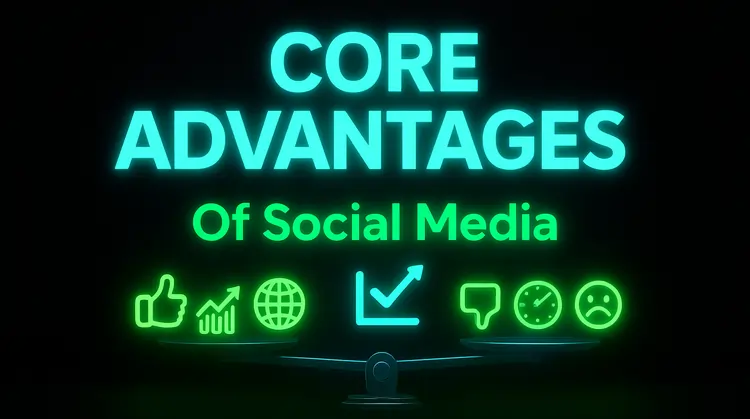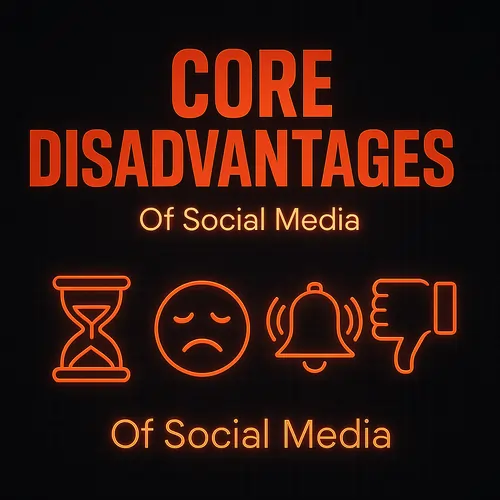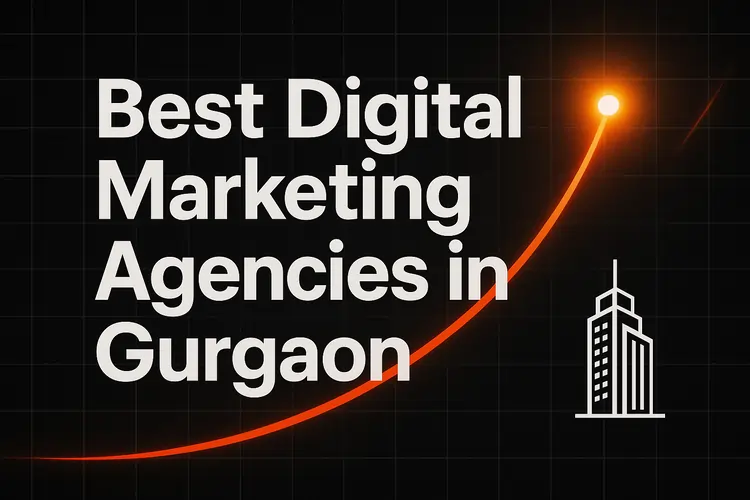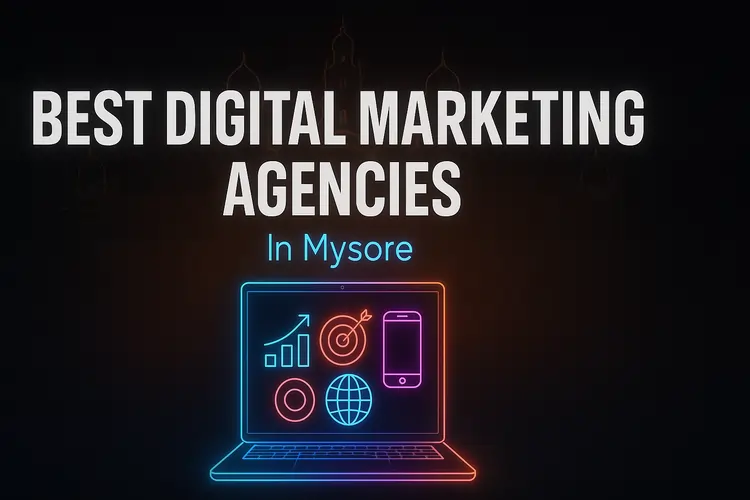The advantages and disadvantages of social media in 2025 have never been more visible.
India now has over 820 million active users, spending nearly three hours daily on platforms that can either build careers or break focus.
Endless scrolling, fake news, and anxiety make many question if social media is a curse.
Yet at the same time, businesses scale to crores in revenue, students learn faster than ever, and creators build global audiences.
At The DM School, we’ve seen this shift firsthand — training 1 Lakh+ students and managing ₹10 Cr+ in ad spend.
Written by Deepak Singh, Founder — The DM School (Google Partner; 1 Lakh+ students trained).
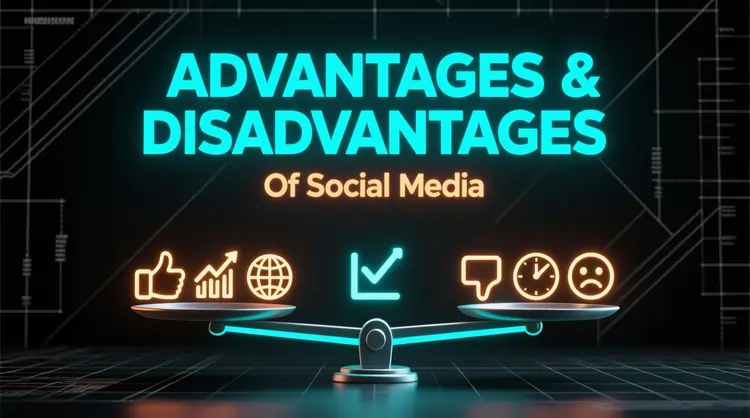
Unlike other guides, this one brings India-first data, fresh 2025 stats, and case studies to show both the power and the pitfalls of social media.
Table of Contents
Social Media Impact on Different Groups
Summary: Social media impacts every group differently — students, businesses, society, and parents face unique pros and cons.
Case Studies
📈 Delhi Startup Scales with Instagram Reels
A small D2C startup in Delhi used Instagram Reels to showcase eco-friendly products. Within 60 days, their reels crossed 1M views and sales grew 5x. The campaign cost under ₹50K but delivered lakhs in revenue.
Summary: Smart use of reels can scale small Indian businesses quickly with low investment.
📉 Lucknow Student Distracted by Endless Scrolling
A 19-year-old student in Lucknow prepared for competitive exams but spent 6+ hours daily on TikTok alternatives and Instagram reels. His performance dropped sharply, showing how addiction can sabotage long-term goals.
Summary: Excessive use of social media can derail academic focus and performance for Indian students.
Common Myths About Social Media (Busted)
“Social media is only bad.”
Not true. Social media is neutral — it’s how you use it. Students land jobs, businesses scale to crores, and NGOs raise funds through the same platforms people criticize.
Summary: Social media can be harmful or helpful — the outcome depends entirely on usage.
“If it’s free, it must be safe.”
Wrong. Data is the real currency. From leaked Aadhaar details to WhatsApp forwards, free platforms monetize user data heavily.
Summary: Free platforms hide the real cost — your personal data is the payment.
“Business growth needs ads only.”
Incorrect. Organic reach through reels, SEO, and communities can rival paid ads. At The DM School, our strategy calls show clients how to blend both.
Summary: Growth comes from mixing organic and paid strategies, not ads alone.
Tools & Tips for Healthy Social Media Use
Social media is powerful when used with balance. The right tools and habits can protect focus, privacy, and productivity.
⏱ Screen-Time & Focus Tools
Apps like Digital Wellbeing and Forest help Indians limit daily scrolling. Setting a 2-hour cap can save 10+ productive hours weekly.
Summary: Screen-time apps turn endless scrolling into mindful use.
🔐 Privacy & Security Tools
Enabling 2FA on WhatsApp, Instagram, and Gmail protects against hacks. VPNs add extra safety when using public WiFi in cafes or co-working spaces.
Summary: Simple privacy settings reduce risks of data theft and hacking.
📊 Business & Marketing Tools
Tools like Buffer, Hootsuite, and Meta Business Suite let Indian SMEs schedule posts, track ROI, and run ad campaigns efficiently. Many partner with social media management services for expert execution.
Summary: Scheduling and analytics tools make social media a business growth engine.
🧘 Healthy Habits
Unfollow negative accounts, mute distractions, and use social platforms with intent. Six months from now, these micro-changes will transform focus and mental health.
Summary: Healthy habits ensure you control social media — not the other way around.
90-Day Checklist to Use Social Media Wisely
1) Week 1–2: Audit Your Usage
Track daily screen time. Identify which apps consume most hours. Awareness is the first step to control.
Summary: Knowing your usage baseline helps you take back control.
2) Week 3–4: Set Limits & Tools
Install Digital Wellbeing or Forest. Cap daily use at 2 hours. Block distractions during study or work hours.
Summary: Tools and limits keep social media from dominating your day.
3) Month 2: Create Value
Instead of only consuming, start creating. Share posts, reels, or blogs about your skills, business, or learning journey.
Summary: Shift from consumer to creator for long-term benefits.
4) Month 3: Measure & Reset
Review what worked. Check engagement, learning gains, or productivity boost. Reset limits and goals for the next 90 days.
Summary: Regular reviews keep social media aligned with your personal and business goals.
Overall Summary: In 90 days, you can move from mindless scrolling to mindful, productive use of social media.
Conclusion — The Social Media Double-Edged Sword
Social media is neither angel nor enemy. It is a double-edged sword that can empower growth or drain focus.
Used with intent, it fuels business ROI, creates jobs, and spreads knowledge. Used carelessly, it triggers addiction, anxiety, and misinformation.
Six months from now, you’ll either be in control of social media — or it will control you. The choice is yours.
For businesses that want to grow without guesswork, our Google Partner Digital Marketing Agency helps turn clicks into consistent revenue.
Summary: Social media can build careers or break focus — intent and strategy decide the outcome.
FAQ — Advantages and Disadvantages of Social Media
What are 5 advantages and disadvantages of social media?
Advantages: connectivity, business growth, education, creativity, civic awareness. Disadvantages: addiction, misinformation, mental health issues, privacy risks, cyberbullying.
What are the advantages of social media for students?
Students use social media for learning, networking, and freelancing opportunities. It gives access to free resources, communities, and career exposure.
What are the disadvantages of social media for youth?
Youth often face distraction, anxiety, and bullying online. Long screen time reduces focus on studies and may impact mental health.
What are 10 advantages of social media?
Connectivity, business growth, education, jobs, creativity, entertainment, civic engagement, global exposure, awareness, and low-cost marketing.
What are 5 disadvantages of social media for business?
Businesses face reputation risks, data leaks, fake reviews, employee productivity loss, and dependence on algorithm changes.
